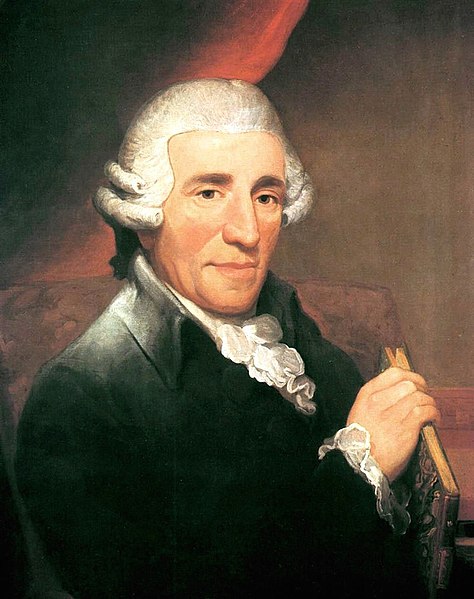Haydn in plain sight

Felix Mendelssohn is clearly the most-honored composer of 2009 by virtue of the fact that he would have turned 200 this year if he were not dead.
But this annum also offers another, somewhat more attenuated anniversary, with the bicentennial of Franz Joseph Haydn’s passing. Papa Haydn remains the least performed of the greatest composers, in large part because he is the most uncomplicated and least neurotic. While there are fleeting shadows in his oeuvre, Haydn’s music remains predominantly witty, cheerful, and optimistic—qualities less prized in our darker, more fraught era (or, at least, by conductors who would rather make a splash with dramatic, large-scale Romantic works).
Kudos then to Music of the Baroque and Nicholas Kraemer for feting Haydn with two symphonies in their exhilarating season-closing concert Monday night at the Harris Theater.
In his witty introduction, Kraemer explained his unusual orchestral layout for the Haydn symphonies: strings rear and left, and winds and brass right, the sections facing each other to aid clarity in antiphonal passages.
Haydn’s Symphony No. 80 is one of the (many) infrequently performed of the composer’s 104 works in the genre, likely, as Kraemer suggested, because “it doesn’t have a name.” The neglect is not due to any lack of musical quality as shown by the delightful, effervescent performance presented Monday night.
Kraemer is a marvelous Haydn conductor with a clear enthusiasm for his music and the ensemble’s principal guest conductor made the most of the hairpin dynamic turns, unexpected silences, and quirky harmonic curveballs. The unorthodox layout paid dividends in the phrases batted back and forth between winds and strings.
Somewhat better known is Haydn’s Oxford Symphony (No. 92), which received an equally sterling reading. With refined and brilliant playing by the musicians, Kraemer led a witty, fizzing performance that deftly balanced Haydn’s lyric grace and driving dynamism.
Music of Handel framed the Haydn works, the evening leading off with his Concerto a due Cori in F major. One of Handel’s most industrious recycling efforts, the suite mines music from Esther, the Occasional Overture, the Ode for the Birthday of Queen Anne, and, most prominently, Lift Up Your Heads from Messiah.
Kraemer’s Baroque style is a well-judged middle-ground: fleet, incisive and mindful of period manners yet keeping an essential amiability, and avoiding the dynamic exaggeration and breathlessness of many Baroque ensembles. The sheen and refinement of the Music of the Baroque musicians was well displayed in this “concerto for two choirs” with wonderfully gracious horns and dazzling bravura by oboists Bob Morgan and Peggy Michel in the closing section.
Handel’s Music for the Royal Fireworks made a suitably grand finale to the concert and Music of the Baroque’s season. The performance mercifully eschewed the live pyrotechnics that ignited several blazes at its premiere, but there was no lack of fire or vitality in this rousing performance put across with enormous verve and highlighted by the clarion trumpet playing of Charles Geyer and Barbara Butler.
Music of the Baroque’s 2009-2010 season begins October 16 with Handel’s masque Acis and Galatea starring Elizabeth Futral. 312-551-1414; www.baroque.org
Posted in Uncategorized




